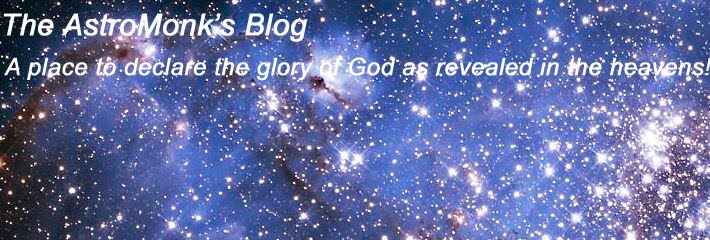Well, miracles do indeed happen. Last night I actually had a few hours of uncommitted time AND a nice clear / dry / cloudless night with just a sliver of a moon. (When observing faint deep space objects, a full moon is about the equivalent of shining a search light into the sky - makes observing of faint objects virtually impossible.) So out to the Pod I went - popped open the dome, fired up the mount, computer and video gear and voila - within a short time, I was observing. I piggy backed my Canon T1i camera with its 100-400mm L series zoom lens and shot a few dozen moon pics. Then I pulled up the astro video camera control software and watched the moon for a while. The atmosphere wasn't terribly still, but not too bad either. (When observing the moon and planets and such, the varying amounts of turbulence in the upper atmosphere causes the objects to seeming dance around in the eyepiece or camera. Some nights are reasonably good, but most are pretty jumpy.)
I then logged into http://nightskiesnetwork.com/ and started broadcasting what I was observing on the internet. Since this is the first time I got everything back up and running after having to do a complete observatory computer rebuild, I had to take some extra time to make sure all the options and parameters for everything were set up properly. I decided to try my luck with a couple deep space objects. I pointed the planetarium software cursor to M81, pressed control-
Not bad at all! Remember, this is a direct screen capture of live video coming off the telescope - no stacking and processing to pull out the image. The astro video camera - a Mallincam Hyper Color Plus model - does it all automatically by capturing all the photons received during a given sample period (28 seconds in this case.) As an interesting side note, the photons my camera received from this object last night (and you now see on the page) left the galaxy about 12 million years ago -- or in other words, its 12 million light-years away from us! Just for grins, I also took a peek thru my eyepiece on the other scope mounted side-by side to my my main scope. The view thru the eyepiece was just a faint colorless smudge barely perceptible over the background sky. I really like my Mallincam!
Not too far away (in the 'canopy' of the sky) is another cool deep space object cataloged as M82 and also known as the Cigar Galaxy. Also located about 12 million light years away, this is now known to be a starburst galaxy. It is incredibly bright - about 5 times as bright as our whole Milky Way galaxy. And perpendicular to the main body you see below, are two huge jets of xray emissions. The creativity of God is without limit! Below is a snapshot of what I was viewing on my computer screen:
Again, taking a peek thru the eyepiece, I only see a little fuzzy patch of light. Although it's happening a little slowly at first, my bet is that astro-videography will one day become THE way for amateurs to observe the heavens.
Since I still had my DSLR piggy-backed on the scope, I decided to drop the zoom to 100mm and take about 50 or so 45 second exposures of the area of sky where M81 & M82 reside. I'll have to bring the data into my main PC in the house for some stacking and processing. My hope is that I was able to catch the two objects together in the wider field of view of the 100mm lens and the DSLR's bigger CCD chip. Time will tell. To stack and process these 50 or so images into a single hi-resolution image will take at a minimum of about 4 to 5 hours. That's why astro-videography is so much more fun and more like traditional observing -- instant gratification ;-) So if the image comes out - that will be my next post. Stay tuned - and keep looking to the heavens - and the God of heaven!
Peace & blessings... Donn







No comments:
Post a Comment